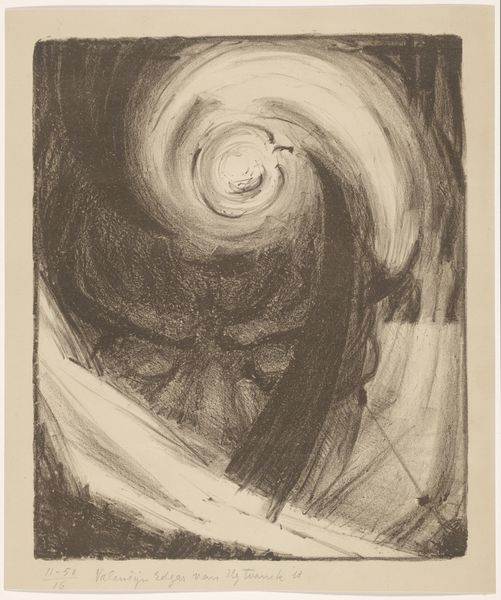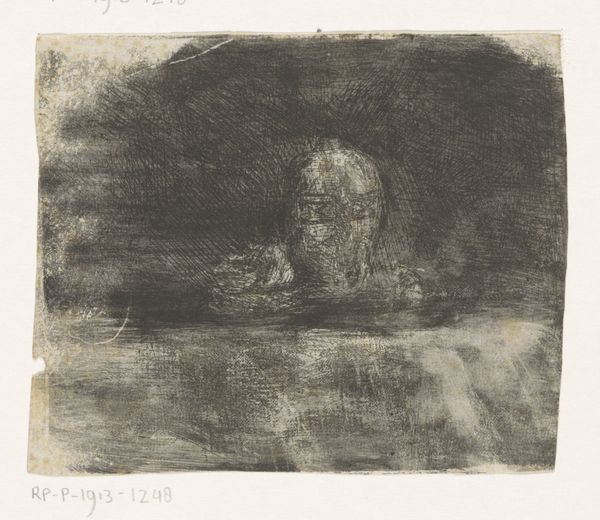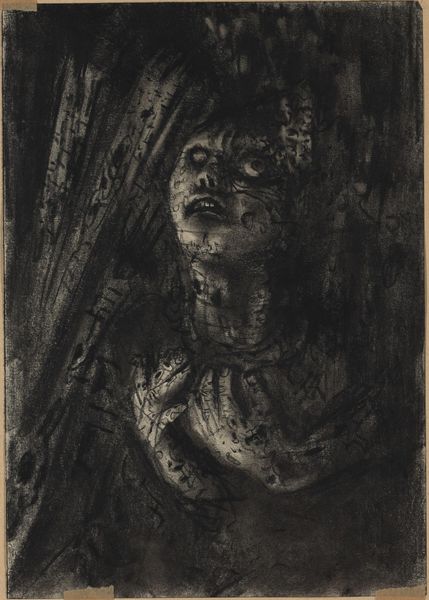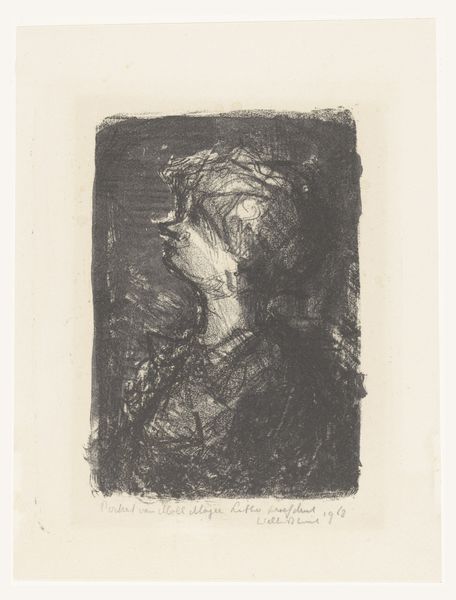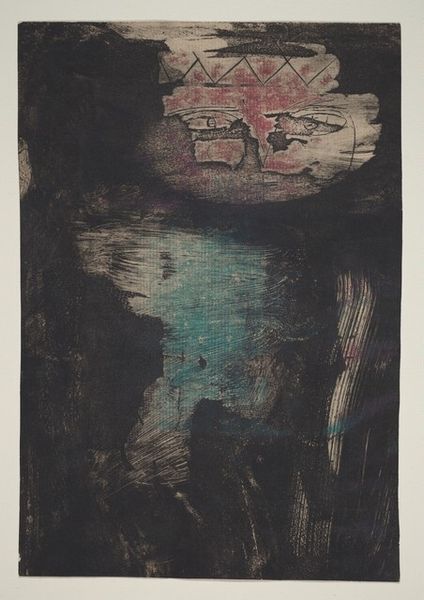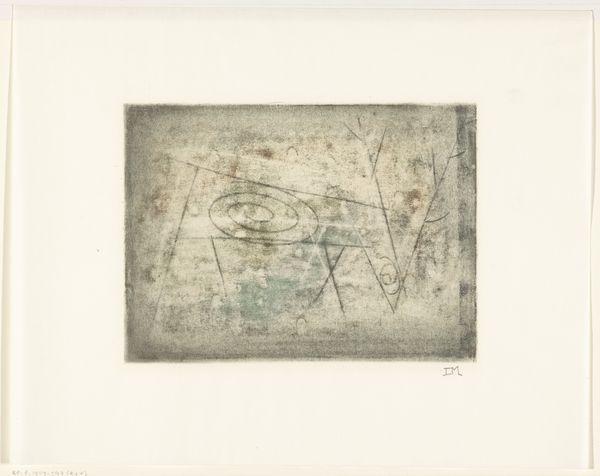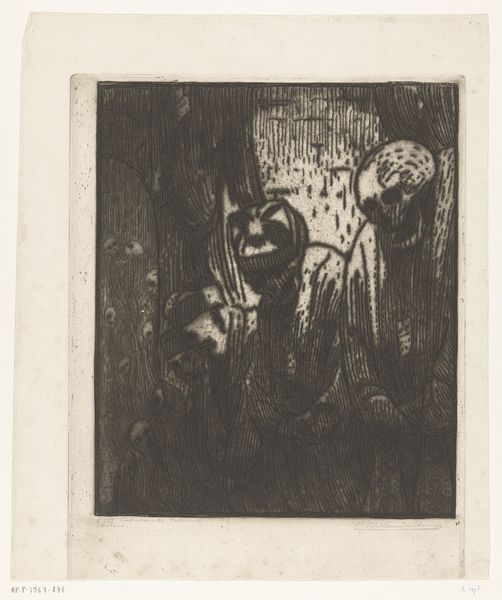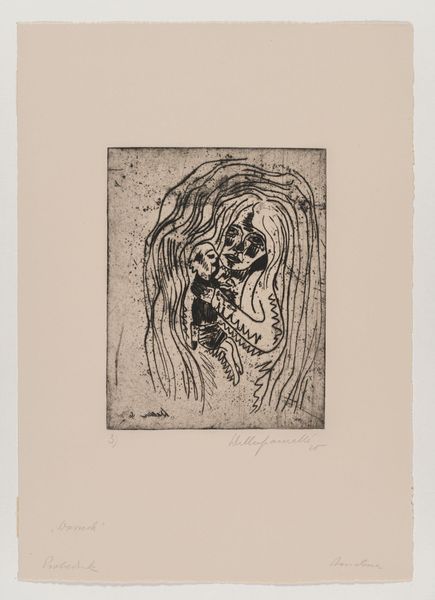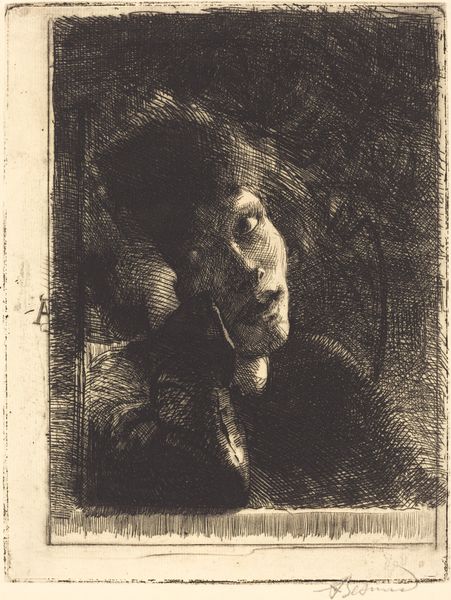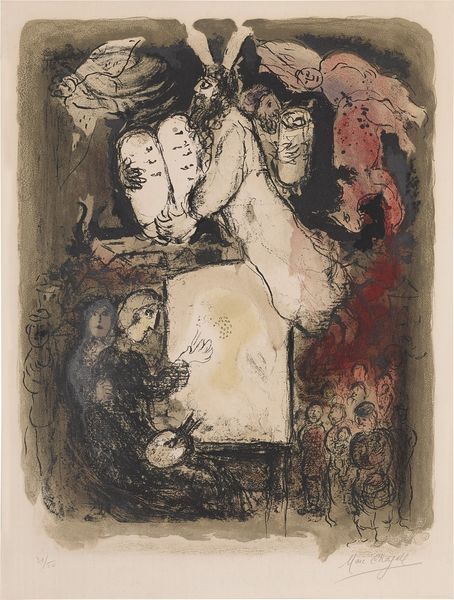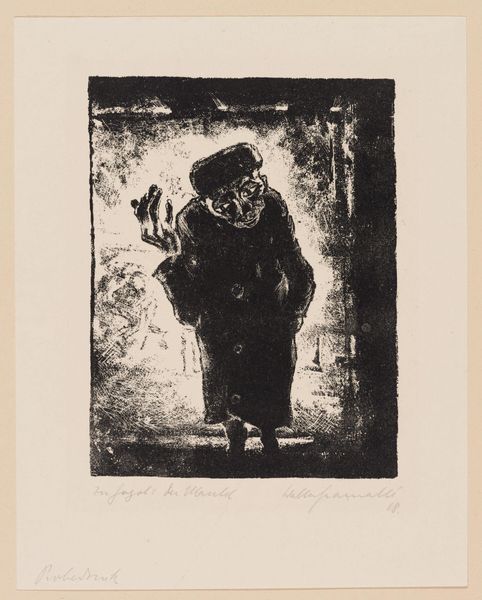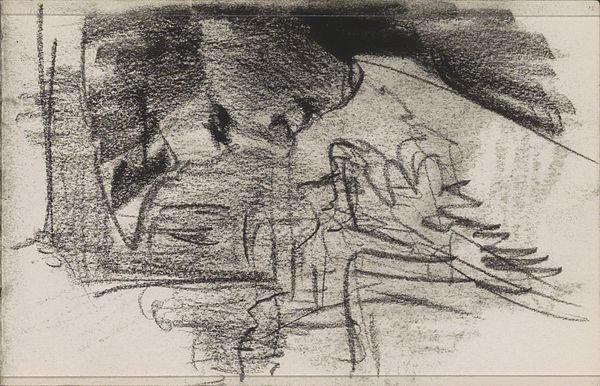
Bust of a Weary Man, Self-portrait (Ermüdender Kopf, Selbstporträt) 1922
0:00
0:00
print, etching
#
portrait
#
self-portrait
# print
#
etching
#
figuration
#
expressionism
#
line
Dimensions: sheet: 53.5 × 38 cm (21 1/16 × 14 15/16 in.) plate: 25 × 24 cm (9 13/16 × 9 7/16 in.)
Copyright: National Gallery of Art: CC0 1.0
Editor: Here we have Walter Gramatté’s "Bust of a Weary Man, Self-Portrait" from 1922, an etching that practically sighs onto the paper. It feels raw, exposed. What strikes you about it? Curator: Ah, yes, the weariness practically emanates from the print, doesn’t it? For me, it's the tension between the delicate lines of the etching and the palpable weight of emotion they convey. I imagine Gramatté, late into the night, hunched over the plate, pouring his own anxieties onto it. Notice how the lines aren't just descriptive, but almost seem to vibrate with inner turmoil. Do you sense that same agitation? It's not simply a portrait; it's a state of being, a feeling rendered visible. Editor: I definitely get that sense of unease. It’s like he's captured a feeling more than a likeness. The hat feels like an anchor weighing him down. Was this common in Expressionist self-portraits? To be so… vulnerable? Curator: Expressionism, at its core, aims to externalize the internal. The raw emotion you see wasn’t just common; it was the very point! Artists like Gramatté sought to tear away the polite masks of society and reveal the exposed nerve endings beneath. It's a deliberate rejection of academic polish for emotional truth. The distortion, the exaggerated features... they're all tools to amplify that inner landscape. Even that slight hint of color, a blood-red cap, draws your eyes directly to the place from where that anguish arises: his inner thoughts. What do you make of the ethereal quality and dark background? Editor: The color draws my eye but then all that dark around the head creates this isolated and somber sensation, a pensive bubble where you think of the hardships of life… it might feel self-absorbed, like the troubles and pain only involve him. The etching as a medium supports that perfectly; what do you mean? Curator: You nailed it. The nature of an etching itself, that process of scratching away at the surface, mirrors the artist's internal struggle. It is difficult, slow work, requiring immense intentionality and careful labor, until you release the full plate onto the final output! But think, Editor, we also scratched away to explore his pain… what an excellent reminder of our abilities of sharing art through new mediums.
Comments
No comments
Be the first to comment and join the conversation on the ultimate creative platform.

